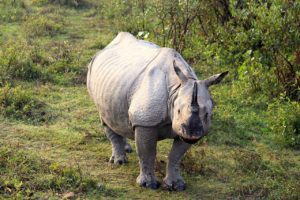Published on: September 22, 2021
RHINO HORNS
RHINO HORNS
What is in news : Assam will mark World Rhino Day — September 22 — with a special ceremony by burning a stockpile of nearly 2,500 horns of the one-horned rhinoceros.
Why : The ceremony has been publicised as a “milestone towards rhino conservation” aimed at “busting myths about rhino horns”. It shares a loud and clear message to the poachers and smugglers that such items have no value. It is in accordance with Section 39(3)(c) of the Wildlife (Protection) Act of 1972.
Why are Rhino horns smuggled : ground rhino horn is used in traditional Chinese medicine to cure a range of ailments, from cancer to hangovers, and also as an aphrodisiac.” In Vietnam, possessing a rhino horn is considered a status symbol
MAHITI FOR PRELIMS
RHINO
- The Greater One-Horned Rhino is one among the five different species of Rhino.
- The other four are:
- Black Rhino: Smaller of the two African species.
- White Rhino: Recently, researchers have created an embryo of the northern white rhino by using In vitro Fertilization (IVF) process.
- Javan Rhino: Critically endangered in IUCN Red List.
- Sumatran Rhino: Recently gone extinct in Malaysia.
- There are three species of rhino in Asia—Greater one-horned (Rhinoceros unicornis), Javan and Sumatran.
- Only the Great One-Horned Rhino is found in India.
- Also known as Indian rhino, it is the largest of the rhino species.
- It is identified by a single black horn and a grey-brown hide with skin folds.
- They primarily graze, with a diet consisting almost entirely of grasses as well as leaves, branches of shrubs and trees, fruit, and aquatic plants.
- Protection Status:
- IUCN Red List: Vulnerable.
- Convention on International Trade in Endangered Species of Wild Fauna and Flora (CITES): Appendix I (Threatened with extinction and CITES prohibits international trade in specimens of these species except when the purpose of the import is not commercial, for instance for scientific research).
- Wildlife Protection Act, 1972: Schedule I

